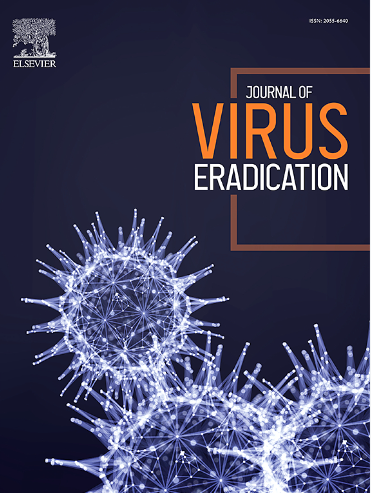人类CD123+AXL+树突状细胞表达Siglec1,捕获并将HIV-1颗粒传递给T细胞
IF 2
4区 医学
Q2 IMMUNOLOGY
引用次数: 0
摘要
人类树突状细胞(dc)根据其个体发生、转录组和功能分为三个亚群。在原发性人类免疫缺陷病毒(HIV)感染期间,外周组织中的dc捕获HIV-1颗粒,迁移到淋巴结,将颗粒转移到CD4+ T细胞,并启动感染。然而,所涉及的DC子集的身份仍然难以捉摸。迄今为止,已经在人类血液中发现了一个新的亚群(AXL+ dc),它在转录组学和功能上与三个已知的亚群不同。与这些相比,静止的AXL+ dc表达Siglec1 (CD169),以CD169依赖的方式捕获HIV-1颗粒,并介导转染。这些结果表明,AXL+ dc可能促进HIV-1的传播和极早期HIV感染在患者中的扩散。针对AXL+ dc或CD169与HIV-1相互作用的治疗策略可能在HIV-1感染的初始阶段提供暴露前保护。本文章由计算机程序翻译,如有差异,请以英文原文为准。
Human CD123+AXL+ dendritic cells express Siglec1 that captures and transmits HIV-1 particles to the T cells
Human dendritic cells (DCs) are classified into three subsets based on their ontogeny, transcriptomes, and functions. During primary human immunodeficiency virus (HIV) infection, DCs in the peripheral tissues capture the HIV-1 particles, migrate to the lymph nodes, transfer the particles to CD4+ T cells, and initiate infection. However, the identity of the DC subset involved is yet elusive. Hitherto, a novel subset (AXL+DCs) has been identified in human blood, which is transcriptomically and functionally distinct from three known subsets. Compared to these, resting AXL+DCs express Siglec1 (CD169), capture HIV-1 particles in a CD169-dependent manner, and mediate transinfection. These results suggested that AXL+ DCs may facilitate HIV-1 transmission and the spread of very early-stage HIV infection in patients. Therapeutic strategies that target AXL+DCs or CD169 interaction with HIV-1 may provide pre-exposure protection during the initial stages of HIV-1 infection.
求助全文
通过发布文献求助,成功后即可免费获取论文全文。
去求助
来源期刊

Journal of Virus Eradication
Medicine-Public Health, Environmental and Occupational Health
CiteScore
6.10
自引率
1.80%
发文量
28
审稿时长
39 weeks
期刊介绍:
The Journal of Virus Eradication aims to provide a specialist, open-access forum to publish work in the rapidly developing field of virus eradication. The Journal covers all human viruses, in the context of new therapeutic strategies, as well as societal eradication of viral infections with preventive interventions.
The Journal is aimed at the international community involved in the prevention and management of viral infections. It provides an academic forum for the publication of original research into viral reservoirs, viral persistence and virus eradication and ultimately development of cures.
The Journal not only publishes original research, but provides an opportunity for opinions, reviews, case studies and comments on the published literature. It focusses on evidence-based medicine as the major thrust in the successful management of viral infections.The Journal encompasses virological, immunological, epidemiological, modelling, pharmacological, pre-clinical and in vitro, as well as clinical, data including but not limited to drugs, immunotherapy and gene therapy. It is an important source of information on the development of vaccine programs and preventative measures aimed at virus eradication.
 求助内容:
求助内容: 应助结果提醒方式:
应助结果提醒方式:


